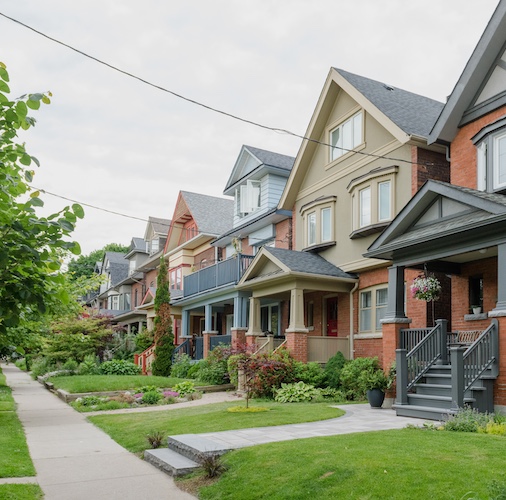What is a cash-in refinance?
Contributed by Sarah Henseler, Tom McLean
Jun 13, 2025
•5-minute read

A cash-in refinance is when you replace your current mortgage with a new one while making a lump sum payment to reduce your new loan’s balance. Doing so can reduce your monthly payment, eliminate private mortgage insurance, or help you qualify for better loan terms.
Key takeaways:
- A cash-in refinance can save you money by reducing your interest rate, eliminating PMI, or shortening your loan term.
- A cash-in refinance has high up-front costs, including the one-time payment and closing costs.
- If a cash-in refinance isn’t the right fit, consider mortgage recasting or extra principal payments to reach your financial goals without changing your loan terms.
How cash-in refinancing works
A cash-in refinance allows you to replace your current mortgage with a new one while paying a lump sum amount to reduce your balance. The lump sum payment is similar to a down payment, and it can help you secure a lower interest rate on your loan or allow you to cancel PMI.
If you’re interested in doing a cash-in refinance, you’ll need to pay closing costs, which typically total 3% – 6% of the total loan amount.
Applying for a cash-in refinance is similar to applying for a mortgage. Once you apply, your lender will review the following:
- Proof of income from your pay stubs, W-2, and income tax returns
- Your credit score
- Debt-to-income ratio
- Employment history
- Proof you have the funds available for the cash-in refinance
- Property appraisal
- Title search
A cash-in refinance can change your mortgage terms in several ways. It reduces your loan balance, which in turn lowers your loan-to-value ratio and decreases your monthly payment. It can also help you secure a lower interest rate, which can further reduce your monthly payment.
Since you’re also refinancing, you can move from an adjustable-rate mortgage to a fixed-rate loan, which has predictable payments. You can also switch from a 30-year to a 15-year loan and pay off your mortgage faster.
Why should I pursue a cash-in refinance?
A cash-in refinance immediately improves your LTV ratio, opening the door to better interest rates and loan terms. It also reduces your overall debt and may lower your monthly payment or allow you to pay off your mortgage sooner.
Here are some reasons borrowers may pursue a cash-in refinance:
- Eliminate PMI payments
- Secure a lower interest rate
- Reduce your monthly payments
- Switch from an ARM to a fixed-rate mortgage
- Shorten your loan term from 30 to 15 years
- Extend your loan term with a new 30-year loan
- Improve your DTI ratio
- Prepare for retirement by reducing your monthly housing expenses
Before doing a cash-in refinance, it’s important to calculate your break-even point by dividing your refinancing costs by the monthly savings. This will help you determine how long you’d need to stay in your home for the refinance to make financial sense.
When shouldn’t I pursue a cash-in refinance?
While there are benefits to a cash-in refinance, it may not be the right option for every homeowner. The biggest drawback is the significant up-front cost, which consumes cash that could be used for other expenses.
Cash-in refinancing also resets your loan terms, possibly extending your repayment timeline. Let’s say you’re halfway through your 30-year mortgage. Even if you secure lower monthly payments, you’ll still end up paying more interest over the life of the loan if you refinance to a new 30-year loan.
And if you have limited emergency savings, a cash-in refinance may not be a worthwhile option. If putting cash toward your mortgage will leave you with less than 3–6 months of expenses in emergency savings, the risk may outweigh the benefit. A financial emergency could force you to borrow against your home equity at potentially higher rates, negating any gains.
Alternatives to cash-in refinancing
If a cash-in refinance doesn’t fit with your financial goals, here are some alternatives.
Mortgage recasting
Mortgage recasting allows you to make a large lump-sum payment toward your principal balance while keeping your existing loan terms and interest rate. Your lender recalculates your monthly payments based on the new balance, lowering your required monthly payment for the remaining loan term.
Mortgage recasting may be a suitable option if you want to lower your monthly payment without incurring the costs of refinancing. Unlike cash-in refinancing, recasting doesn’t require a loan application or credit check. Recasting typically requires a minimum payment of $10,000, and many lenders charge a servicing fee of a couple of hundred dollars – a small amount compared with closing costs.
Cash-out refinance
A cash-out refinance replaces your existing mortgage with a larger loan. You pay off your current loan and keep the difference in cash. You repay what you’ve borrowed as part of your new loan. Like cash-in refinancing, you’re replacing your current mortgage with a new loan, but you’re pulling money out instead of instead of putting it in.
Cash-out refinancing is ideal for homeowners who want to borrow their home equity to pay for home improvements or consolidate debts.
Home equity loans
A home equity loan is a second mortgage that allows you to borrow your equity. Unlike a cash-out refinance, a home equity loan is separate from your primary mortgage and leaves your original loan terms unchanged.
There are two types of home equity loans you can choose from – a traditional home equity loan and a home equity line of credit, or HELOC. A home equity loan comes with fixed interest rates and predictable monthly payments. A HELOC is a revolving line of credit you can draw from as needed and usually comes with variable interest rates.
A home equity loan may be a suitable option for borrowers who wish to tap into their home equity without compromising their current interest rate. A HELOC provides the flexibility to borrow and repay only what you need.
Make biweekly or extra payments
Biweekly or extra payments can help you pay off your principal faster without a large up-front payment or refinancing.
If you pay half of a monthly payment biweekly, you’ll make 26 payments a year. That’s equivalent to 13 monthly payments. This strategy lets you pay off a 30-year mortgage in 25 years and save thousands in interest. Before getting started, check to see if your mortgage servicer charges any prepayment penalties for paying off your loan early.
The bottom line: A cash-in refinance can work in your favor
With a cash-in refinance, you make a large one-time payment toward your mortgage and replace your current mortgage with new loan terms. This can be a good way to lower your interest rates and eliminate PMI, saving you a lot of money over the life of the loan.
There are many ways to reach your financial goals, so be sure to explore your options. If you’re looking for expert guidance, you can contact Rocket Mortgage® for more information on refinancing.

Jamie Johnson
Jamie Johnson is a Kansas City-based freelance writer who writes about a variety of personal finance topics, including loans, building credit, and paying down debt. She currently writes for clients like the U.S. Chamber of Commerce, Business Insider, and Bankrate.
Related resources
10-minute read
Refinancing: What is it and how does it work?
Refinancing lets you trade your home’s mortgage for a new one, ideally with a lower interest rate or monthly payment. Learn why and how to refinance a ...
Read more

8-minute read
Different types of mortgages and how they work
There is a home loan for everyone, but which type of mortgage is best for you? Use this article to understand the types of home loans and how they work.
Read more

7-minute read
Refinancing your mortgage: Requirements explained
Refinancing your home has its benefits, but there are conditions to meet before you apply. Use this guide to understand mortgage refinance requirements.
Read more